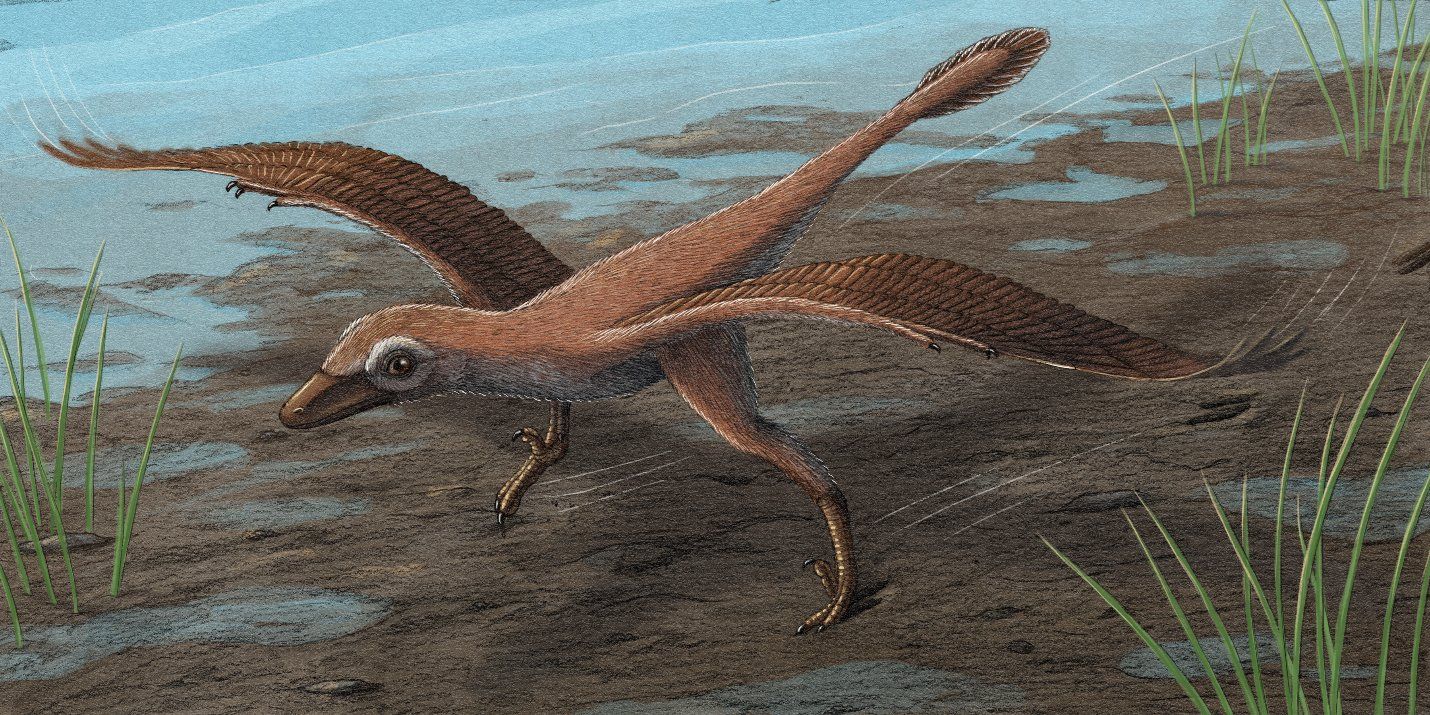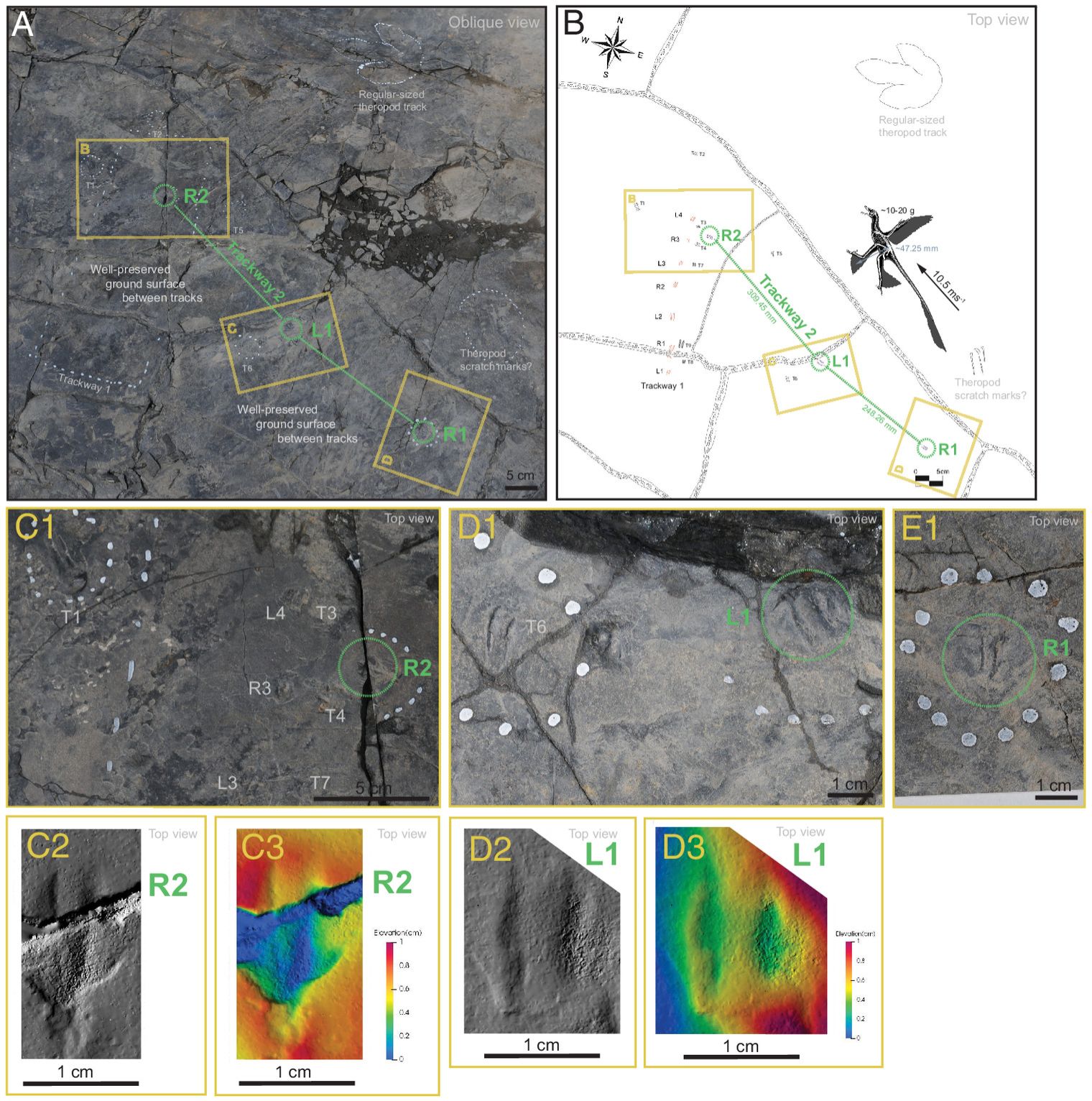Follow us on Google News (click on ☆)

How did this dinosaur manage to lengthen its strides in such a surprising way? It's a mystery researchers explored by analyzing footprints discovered in South Korea.
The study published in Pnas reveals that Dromaeosauriformipes rarus, a raptor the size of a bird, flapped its wings while running. This behavior allowed it to reach unprecedented speeds for a non-avian dinosaur. The footprints show a stride three times longer than that of an ostrich. An improbable feat for a dinosaur weighing just 20 grams (0.7 oz), which beat its wings to gain speed.
This “wing-assisted running” was not intended for takeoff but to run faster. It was an effective means of escaping predators or, conversely, surprising prey.
By reconstructing its movements, researchers estimate it reached 37 km/h (23 mph). This mode of locomotion, mixing running with wing flapping, provides unique insight into the evolution of flight in dinosaurs. In the case of D. rarus, this acceleration mechanism demonstrates the ingenuity of its adaptation.

A: Theropod microraptorian track 2 footprint from the Jinju Formation, South Korea (green dashed lines) with track 1 (left) and a large theropod footprint (top right).
B: Map of the site accurately illustrating the footprint distribution and ground gaps.
C-E: Distinct footprint morphology from track 2 (R1, L1, and R2) confirming the microraptorian track maker.
These fossil tracks prove that flight in dinosaurs did not develop linearly. New discoveries could confirm the existence of flight capabilities in other non-avian dinosaurs.
What is wing-assisted running?
"Wing-assisted running" refers to a form of locomotion where an animal uses wing flaps to increase its running speed. This movement, observed in some dinosaurs and modern birds, helps to overcome obstacles or accelerate without taking flight.
During wing-assisted running, the wings produce lift, which lightens the animal and lengthens its strides. This mechanism, called "flap running" in English, allows the animal to reach speeds it couldn't achieve using just its legs, providing an advantage in fleeing predators or catching prey.
Research shows several indications that the wings of certain dinosaurs like Dromaeosauriformipes rarus were not adapted for flight but rather for speeding up their runs:
- Wing size: Paleontologists have observed that the wings of this dinosaur were too small to allow it to fly. They wouldn't have been able to generate sufficient lift for prolonged flight.
- Distance of fossilized footprints: The tracks found show a very extended stride relative to the animal's size, suggesting additional propulsion. This distance indicates a thrust that increased step length, characteristic of running, with no evidence of takeoff.
- The concept of "flap running": Scientists compared this movement to modern birds that flap their wings to climb or run faster, but without taking off. By analyzing the footprints and the anatomical characteristics of the wings, they conclude that this technique helped lengthen strides, not lift the animal into the air.